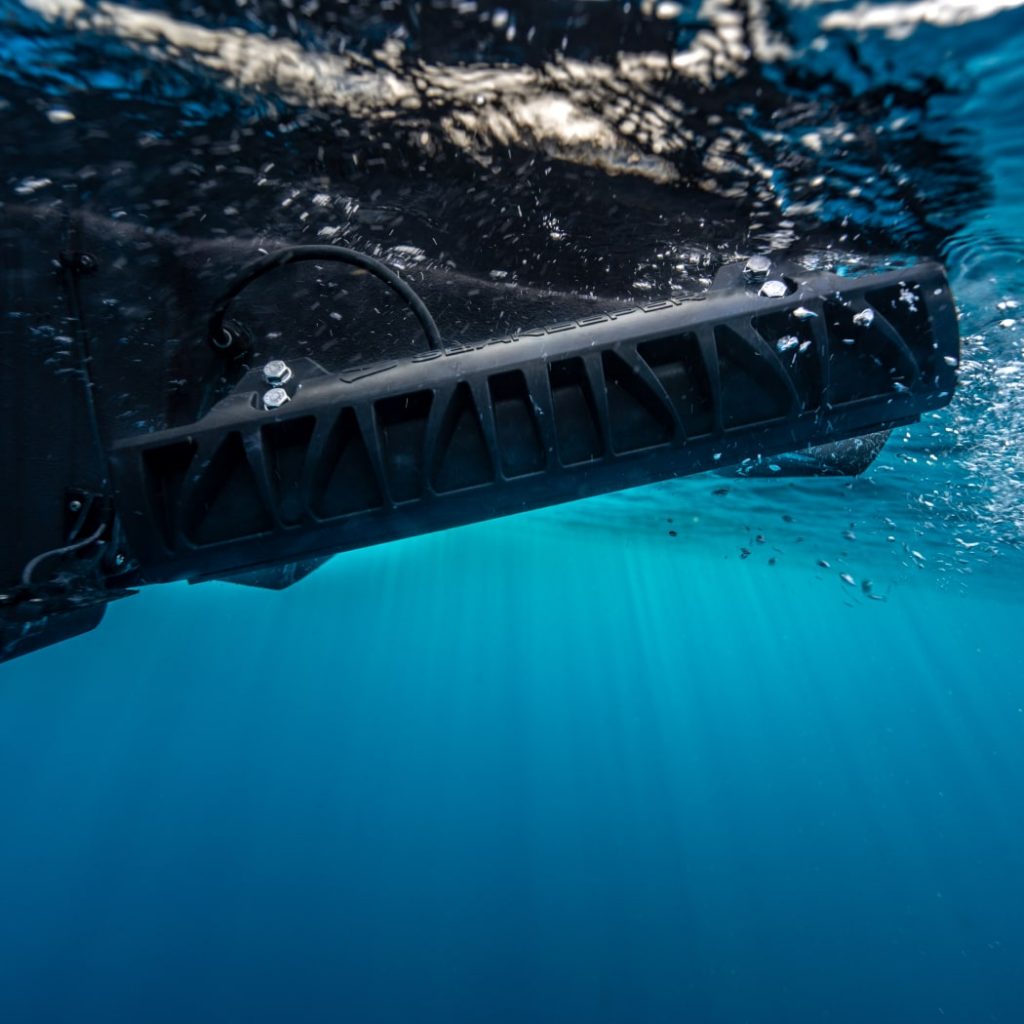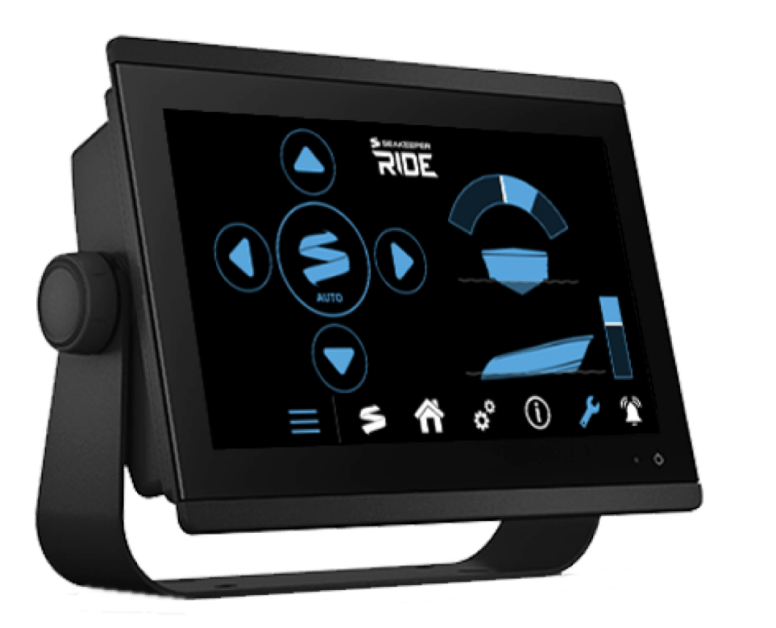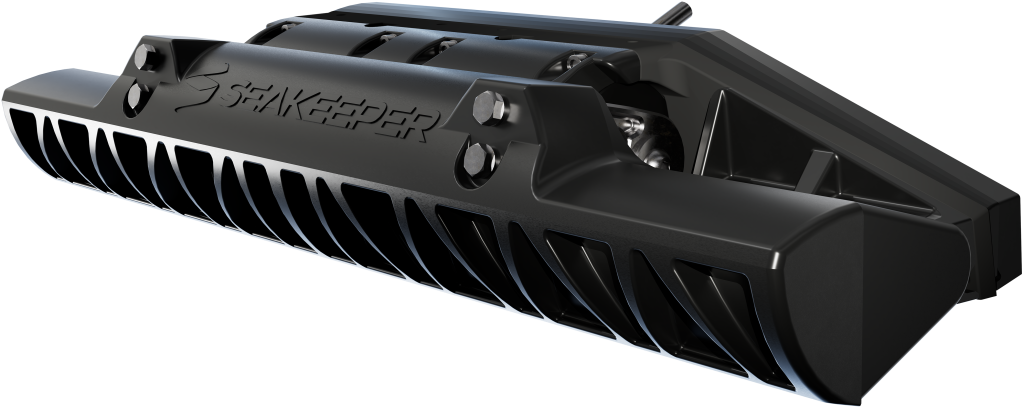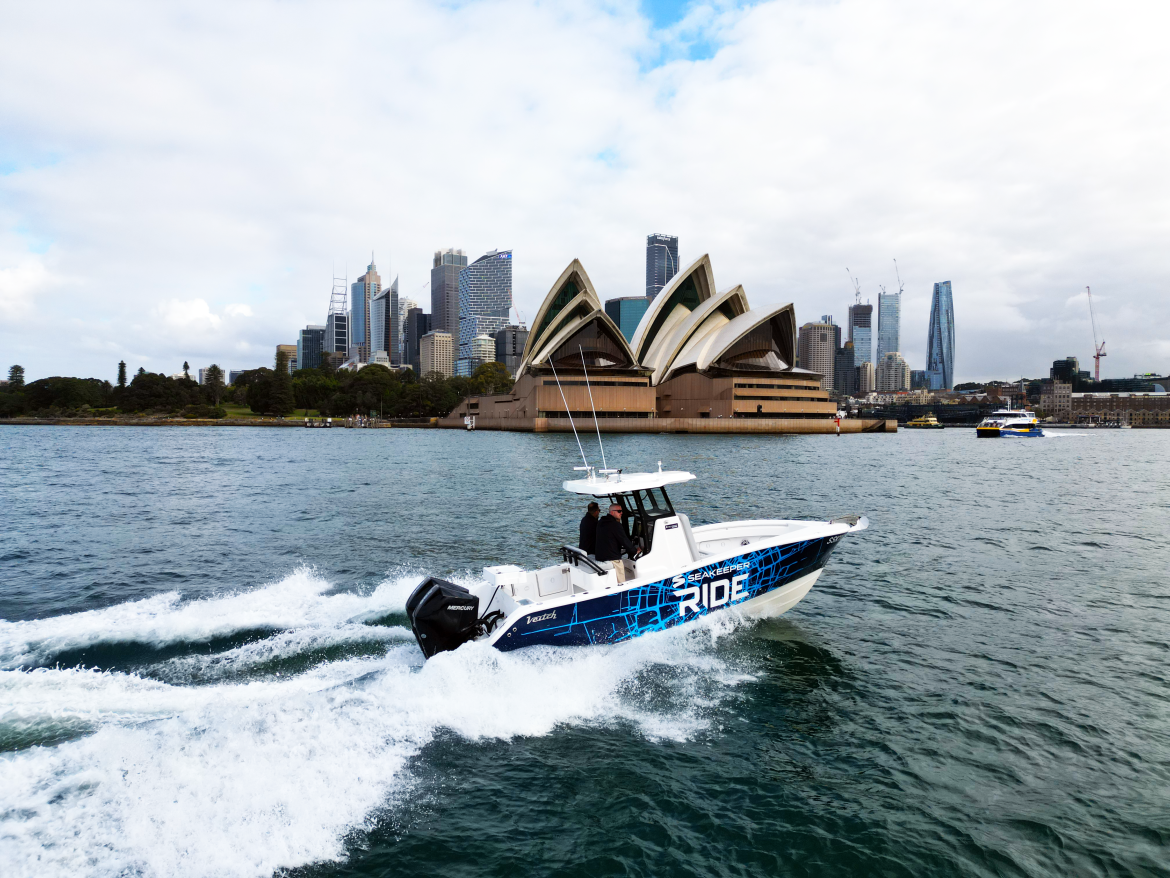Pacific Powerboat magazine shared news earlier this year of a game-changing new product, the Seakeeper Ride. Doug Dukeson experienced first-hand this innovative new system, on the water at the recent Sydney Boat Show. He reports back on this unique and first-of-its-kind trim system. This is a system which includes Vessel Attitude Control, which is innovative because it not only controls the roll but also controls the pitch.

Introduced in August 2022, Seakeeper Ride paved the way for the creation of a new underway stabilisation category, a Vessel Attitude Control System (VACS), derived from the Attitude Control Systems (ACS) used in air and space craft to control pitch, roll and yaw underway. Seakeeper, a company that has long been renowned for its gyro stabilisers, introduced the Seakeeper Ride System, a system designed to smooth out the bumps, for boats of up to 10 metres. “There are several variants of transom-mounted systems that create lift to adjust. running angle and heel, but there was nothing available that could truly eliminate pitch and roll underway,” explains Seakeeper President and CEO Andrew Semprevivo. “There was also nothing available that was fully automated. You don’t continually adjust your suspension, anti-lock brakes, or traction control systems in your car, they just work. We felt your boat should be much the same. There was an opportunity, and that’s what we focused on when we kicked off the development.” The Seakeeper Ride is innovative because it not only controls the roll but also controls the pitch, which provides a true running attitude and a much more stable and comfortable ride when at speed. It eliminates up to 70% of underway pitch and roll and is intuitive and automatic. Claims of pitch and roll elimination are nothing without the backing of real, measurable results, an extensive library of data/performance reports can be found at www.ride.seakeeper.com/performance Additional benefits of the Ride system include auto trim (a customized Trim Command Curve that automatically adjusts the boat to match the optimal running angle), Hole Shot Control (allows for faster acceleration to get the boat on plane quickly and with more fuel efficiency), Coordinated Turn (adjusts the heeling angle in a turn), and List (heel) Control (compensation for movement on board, wind, uneven loads, or prop torque). With Seakeeper Ride, you aren’t getting a finger workout making constant adjustments to combat list or heel. The Seakeeper Ride system predicts motion and stops it before it starts, automatically adjusting the heeling angle of your boat during turns. Seakeeper Ride controllers are mounted to your boat’s transom, below the waterline. Additional components are installed inside a console and are wired to the controllers. Using custom, proprietary inertial sensing hardware and software, the system understands how the boat is behaving in all three axes and commands deployment of the rotary blades to counteract pitch, roll and yaw. As the blades are deployed, they create lift at the transom, managing the vessel’s motion instantaneously. Wave motions are often unpredictable and ever-changing, occurring in just milliseconds. It took expert control software and hardware to compete. Seakeeper Ride’s sensors take 1,000 measurements per second, and its proprietary rotary blades make 100 adjustments per second to combat wave motions. Currently, Seakeeper Ride is available in three sizes/options. There is the Seakeeper Ride 450 for boats up to 8 m, the Seakeeper Ride 525 for boats from 8 m to 9 m and the Seakeeper Ride 600 for boats from 9m to 10.7 m. There is the option to either purchase a new boat with the system already installed or to retrofit to your existing boat. There is constant work on research and development underway to equip more vessel types with Seakeeper Ride. The components of the Seakeeper Ride
include:-
Software Module – the “brain” of the system that includes Seakeeper Ride’s proprietary software and motion sensor.
Distribution Module – provides power and communication between the controllers and the software module.
User Interface – compatible with selected models from Garmin, Raymarine, Simrad, Navico, Lowrance, B&G and Furuno. Keypad (optional) – physical, mountable keypad that can be used for manual adjustments outside the MFD application.
Seakeeper Ride’s maintenance needs are minimal. The actuators on each controller have zinc anodes that need to be periodically inspected (about every three months) and replaced when about half of an anode has worn down. As with most other boating accessories, a visual inspection and freshwater rinse is suggested after each use or each time the boat is removed from a saltwater environment. Mild marine soap is safe to use on the controllers to remove additional salt. Bottom paint is recommended for systems that will be submerged for more than two weeks at a time, and to remove marine growth, a pressure wash at up to 140 MPa (≈ 2000psi) is recommended, with a mild marine soap and a scrubbing brush.

The Seakeeper Ride retails from: RRP AUD $7899 inc GST for the 450, RRP AUD $13,199 inc GST for the 525 and RRP AUD $18,499 inc GST for the 600. Each comes with a 2-year warranty.
On the water: There’s always going to be some motion as a boat travels over water, so when we got out on the water onboard the incredibly deep-V Veitch 23 Centre Console (26 degrees deadrise), there was going to be no hiding whether the product worked or not. Boats with such a deep V are traditionally tender, but offer fantastic rough-water performance. A boat with a deep-V hull form cuts through waves more easily and with much-reduced slamming than does one with a flatter bottom, but with the higher deadrise angle, deep-Vs often tend to roll from side-to-side more than flatter-bottomed boats. This is where the Seakeeper Ride system came into its own. We took the opportunity to switch back and forth between ‘Ride System on’ and ‘Ride system off’, and the difference on the ferry-packed Sydney ‘washing machine’ harbour was remarkable. The Seakeeper team had the Veitch 23 CC dialled into the optimum ride, and what a difference to have the boat remain almost level, from hole shot acceleration, getting us up on the plane and level control once underway! In all sea conditions, quarter on, head on, in following seas and riding rolling ferry wakes, it certainly makes the skipper’s task of controlling the helm so much easier. In deep-V boats like this, I have often witnessed the skipper tapping away on the trim tabs controls like people used to do when playing space invaders last century.
We moved about the boat on the plane, and with the system switched on, the boat remained stable, but with the system switched off the boat had a tendency to roll, as you would expect from 26-degree boat. The system has transformed the boat, making it a great allrounder, offering the stability that is normally compromised in a great rough water, deep-V boat. I can also see this system as being invaluable for some hard top models, that are prone to windage, with the system taking the lean out of the ride. Seakeeper Ride claims that its system ‘conquers the motion of the ocean’, and I would have to agree that it dramatically reduces the lumps and bumps – something your guests and knees will thank you for!





